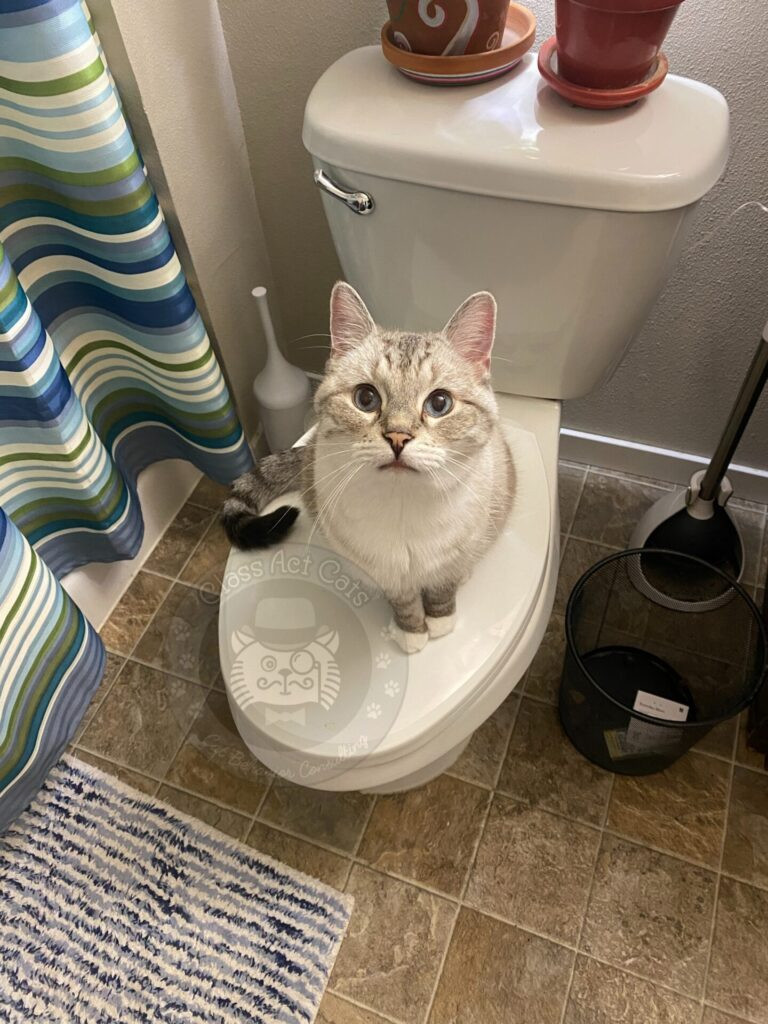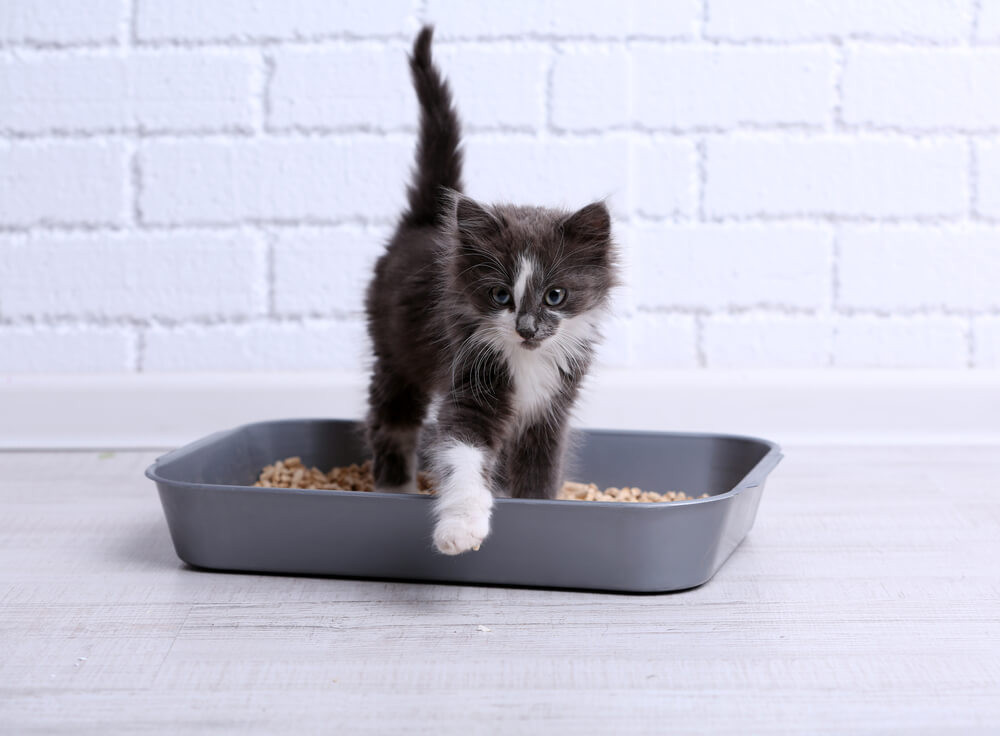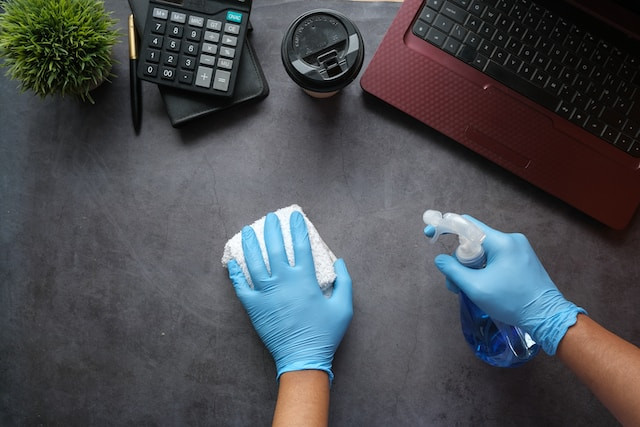Dealing with cat urine outside the litter box is a common frustration for cat owners. The pungent odor can permeate your home, and if not cleaned properly, it can linger and even encourage your cat to repeat the behavior. Fortunately, the right approach and, crucially, the Best Enzyme Cleaner For Cat Urine, can effectively eliminate both the stain and the smell, restoring your home to a fresh and clean environment.
Why Cat Urine Odor is So Persistent
Cat urine isn’t just any unpleasant smell; it’s notoriously strong and difficult to get rid of. This is due to its unique composition, particularly a compound called felinine. As cat urine dries, felinine breaks down, and one of its byproducts is sulfur-containing compounds called thiols, which are responsible for that acrid, ammonia-like odor that can be so offensive.
Beyond felinine, uric acid is another major culprit in the persistent nature of cat urine smells. Uric acid crystals are not water-soluble and can remain embedded in porous materials long after the urine has dried and initial cleaning attempts have been made. These crystals can reactivate and release odor, especially in humid conditions, causing the smell to return even after you thought you had successfully cleaned the area.
This is why standard household cleaners, soap, water, or even bleach often fail to eliminate cat urine odor completely. They may mask the smell temporarily or address surface stains, but they don’t effectively break down the uric acid and other odor-causing components at a molecular level.
 Zoloft the cat sits on a closed toilet looking at the camera
Zoloft the cat sits on a closed toilet looking at the camera
Even if you can’t smell it anymore, your cat’s sensitive nose might still detect lingering urine odors.
The Science Behind Enzyme Cleaners and Why They Work
This is where enzyme cleaners come into play as the best enzyme cleaner for cat urine. These specialized cleaners are specifically formulated to target and break down the complex organic compounds found in cat urine, including uric acid.
Enzymes are biological catalysts – proteins that speed up chemical reactions. Enzymatic cleaners contain specific enzymes that are designed to target and digest the molecules responsible for cat urine stains and odors. These enzymes work by breaking down complex molecules into smaller, odorless components like carbon dioxide and water.
Think of it like this: uric acid is a large, stubborn molecule. Enzyme cleaners contain enzymes that act like tiny scissors, cutting the uric acid molecule into much smaller pieces that no longer cause odor or staining.
Key benefits of using an enzyme cleaner for cat urine:
- Complete Odor Elimination: Enzymes break down uric acid and other odor-causing components, truly eliminating the smell rather than just masking it.
- Stain Removal: Enzymes can also help break down the pigments in urine, aiding in stain removal from various surfaces.
- Prevents Re-marking: By completely removing the urine odor, enzyme cleaners reduce the likelihood of your cat returning to the same spot to urinate again. Cats are highly scent-driven, and lingering urine smells can signal to them that it’s an acceptable place to “go.”
- Safe for Pets and Home: Most enzyme cleaners are non-toxic and safe to use around pets and children when used as directed. They are also generally safe for various surfaces, but it’s always wise to test in an inconspicuous area first.
Choosing the Best Enzyme Cleaner for Cat Urine: What to Look For
With numerous enzyme cleaners on the market, selecting the best enzyme cleaner for cat urine can feel overwhelming. Here’s what to prioritize when making your choice:
-
Specifically Formulated for Pet Urine (and Cats): Ensure the product explicitly states that it’s designed for pet urine and ideally mentions cat urine specifically. While some general enzyme cleaners might offer some benefit, those formulated for pet urine will contain a more potent and targeted blend of enzymes. Some products are designed for both cat and dog urine, which can be suitable, but always double-check the label.
-
“Professional Strength” or Highly Concentrated: Opt for “professional strength” or concentrated formulas. These typically contain a higher concentration of enzymes, making them more effective at tackling stubborn cat urine odors and stains. A more concentrated formula can be more cost-effective in the long run as you may need less product per application.
-
Reliable Brands and Positive Reviews: Look for reputable brands known for pet-friendly cleaning products. Read customer reviews to gauge the real-world effectiveness of the cleaner, particularly from other cat owners dealing with urine odor issues. Brands like Rocco & Roxie, Angry Orange (enzymatic formula), and Active Pet Solutions are often recommended and well-reviewed.
-
Consider Scent (or Unscented): Enzyme cleaners come in scented and unscented varieties. While a pleasant scent might seem appealing, heavily fragranced cleaners can sometimes just mask odors rather than eliminate them. For severe urine odor issues, an unscented or lightly scented enzyme cleaner might be preferable to ensure true odor removal. If you prefer a scent, opt for naturally derived fragrances or essential oils, like citrus, which some cats may find less offensive than strong artificial perfumes.
-
Surface Compatibility: Check the product label to ensure it’s safe for the surfaces you need to clean (carpet, upholstery, hardwood, etc.). Most enzyme cleaners are versatile, but some might be better suited for specific materials. Always test in an inconspicuous area first to confirm colorfastness and material compatibility.
Step-by-Step Guide: How to Effectively Clean Cat Urine with Enzyme Cleaner
Once you have the best enzyme cleaner for cat urine, proper application is crucial for optimal results. Follow these steps for effective cleaning:
-
Act Fast (If Possible): The sooner you treat a fresh urine stain, the better. Fresh urine is easier to remove and less likely to deeply penetrate surfaces.
-
Blot Up Fresh Urine: If the urine is still wet, gently blot up as much as possible with paper towels or a clean cloth. Work from the outside of the stain inwards to prevent spreading it. Avoid rubbing or scrubbing, as this can push the urine deeper into fibers.
-
Apply Enzyme Cleaner Generously: Saturate the stained area and slightly beyond its borders with the enzyme cleaner. Don’t be stingy! You need to ensure the cleaner reaches all the urine, including what has soaked into padding or deeper layers of fabric. Follow the product’s instructions regarding dwell time – this is how long the cleaner needs to sit and work. Usually, it’s recommended to let it sit for at least 10-15 minutes, or even longer for old or stubborn stains.
-
Let it Air Dry: Allow the enzyme cleaner to air dry completely. Do not wipe it away or use heat to speed up drying, as this can hinder the enzymatic process. As the cleaner dries, the enzymes are actively breaking down the urine molecules. In some cases, especially for old or severe stains, you may need to repeat the application process.
-
Check for Odor and Stain (After Drying): Once the area is completely dry, check if the odor is gone and if the stain has lifted. If the odor persists or the stain remains, repeat steps 3 and 4. Multiple applications may be necessary for heavily soiled areas.
-
For Laundry: For washable items like bedding, clothing, or rugs, you can pre-soak them in a diluted enzyme cleaner solution before laundering. You can also add a small amount of enzyme cleaner to your washing machine along with your regular detergent for extra odor-fighting power. Consider using an enzymatic laundry detergent specifically designed for pet odors for best results, like ACTIVE Pet Laundry Detergent.
 A grey kitten stepping out of a litter box.
A grey kitten stepping out of a litter box.
Prompt cleaning with the right enzyme cleaner is key to preventing lingering odors and stains.
Cleaning Cat Urine from Different Surfaces: Specific Tips
The general cleaning process applies to most surfaces, but here are some specific tips for common areas where cats might urinate outside the litter box:
Carpet
- Power Cleaners: For carpets, consider using a carpet cleaning machine (power cleaner) with an enzyme-based pet stain and odor remover. Machines like the Bissell Pet Deluxe Carpet Cleaner are popular choices. Pre-treat the stain with enzyme cleaner, let it dwell, and then use the carpet cleaner to extract the cleaner and remaining urine residue.
- Soaking Time: For stubborn carpet stains, you can saturate the area with enzyme cleaner, cover it with plastic wrap to keep it moist, and let it sit overnight to maximize enzyme activity before blotting and air drying.
Furniture and Mattresses
- Injection for Deep Penetration: For thick upholstery or mattresses, urine can penetrate deep into the foam or padding. For these situations, consider using a syringe or needle (without the sharp tip) to inject enzyme cleaner directly into the deeper layers of the stain. You may need to make multiple injections in different spots to ensure thorough saturation.
- Removable Upholstery: If your furniture has removable upholstery covers, take them off and launder them after pre-treating with enzyme cleaner. Clean the inner cushions and furniture frame separately using the enzyme cleaner.
- Mattress Protection: After cleaning a mattress, invest in a waterproof mattress protector to prevent future urine accidents from soaking into the mattress again. Waterproof mattress covers are essential for pet owners.
Hardwood Floors
- Quick Action is Crucial: Urine can damage hardwood floors if left for too long. Wipe up fresh urine immediately.
- Gentle Application: Apply enzyme cleaner sparingly to hardwood floors, as excessive moisture can be harmful to wood. Use a cloth or sponge to apply the cleaner and avoid pouring it directly onto the floor. Let it dwell for the minimum recommended time and then wipe it up thoroughly with a clean, damp cloth. Ensure the floor is completely dry afterward.
- Refinishing May Be Necessary: If urine has deeply penetrated hardwood or caused discoloration, you may need to consider refinishing the affected area to fully restore the wood.
Clothing and Washable Fabrics
- Pre-soaking: Soak urine-stained clothing or washable fabrics in a solution of diluted enzyme cleaner overnight before washing.
- Enzymatic Laundry Detergent: Use an enzymatic laundry detergent like ACTIVE’s Pet Laundry Detergent to boost odor removal during the wash cycle.
When Enzyme Cleaners Aren’t Enough: Troubleshooting Persistent Odor
In most cases, the best enzyme cleaner for cat urine used correctly will effectively eliminate odor and stains. However, if you’re still struggling with persistent urine smells, consider these troubleshooting tips:
- Check the Cleaner’s Expiration Date: Enzyme cleaners can degrade over time, especially if stored improperly (e.g., in direct sunlight or extreme temperatures). Ensure your cleaner is not expired and has been stored correctly.
- Insufficient Cleaner Application: Make sure you are using enough enzyme cleaner to fully saturate the stained area. Skimping on the product can lead to incomplete odor elimination.
- Re-contamination: Is your cat re-urinating in the same spot? Even if you’ve cleaned thoroughly, if your cat is still using the area as a toilet, the odor will return. Address the underlying cause of your cat’s inappropriate urination (medical issues, litter box aversion, stress, etc.) to prevent re-soiling.
- Deeply Embedded Urine: For very old or severe urine stains, especially in porous materials, the urine may be deeply embedded and require professional cleaning or even replacement of the affected material (e.g., carpet padding).
- Try a Different Enzyme Cleaner: While most enzyme cleaners work on the same principle, formulations can vary. If one product isn’t working, trying a different brand or formulation of enzyme cleaner for cat urine might yield better results. Rocco & Roxie is a highly recommended option, but others like Angry Orange and Nature’s Miracle are also popular.
 A person cleaning cat pee with a squirt bottle
A person cleaning cat pee with a squirt bottle
Repeated applications and patience are sometimes needed for stubborn cat urine odors.
Preventing Future Cat Urine Accidents
While knowing how to use the best enzyme cleaner for cat urine is essential, preventing accidents in the first place is even better. Addressing the root cause of your cat’s urination outside the litter box is crucial for long-term solutions.
Common reasons for cats urinating outside the litter box include:
- Medical Issues: Urinary tract infections (UTIs), kidney disease, diabetes, and other medical conditions can cause increased urination, pain, and changes in litter box habits. Rule out medical causes first by consulting your veterinarian.
- Litter Box Aversion: Cats can be picky about their litter boxes. Factors like litter type, box cleanliness, box location, size, and type (covered vs. uncovered) can influence litter box usage. Experiment with different litters, ensure boxes are scooped daily, provide enough litter boxes (rule of thumb: one per cat plus one extra), and place them in quiet, accessible locations.
- Stress and Anxiety: Changes in the home environment, new pets, moving, or loud noises can stress cats and lead to behavioral issues like inappropriate urination. Provide a stable and enriching environment, and consider consulting a veterinarian or feline behaviorist for stress management strategies.
- Territorial Marking: Unneutered male cats are prone to urine marking to establish territory. Neutering or spaying your cat can significantly reduce or eliminate marking behavior. Even spayed/neutered cats can mark if they feel insecure or threatened.
If you’re struggling to determine why your cat is urinating outside the litter box, seeking guidance from a veterinarian or a certified feline behaviorist is highly recommended. They can help identify underlying medical or behavioral causes and develop a tailored plan to address the issue.
Conclusion: Enzyme Cleaners are Your Best Weapon Against Cat Urine Odor
Cleaning cat urine can be challenging, but with the best enzyme cleaner for cat urine and the right techniques, you can effectively eliminate odors and stains, creating a fresh and clean home for both you and your feline companion. Remember to act promptly, choose a high-quality enzyme cleaner specifically designed for pet urine, apply it generously, and address any underlying causes of your cat’s inappropriate urination to prevent future accidents.

